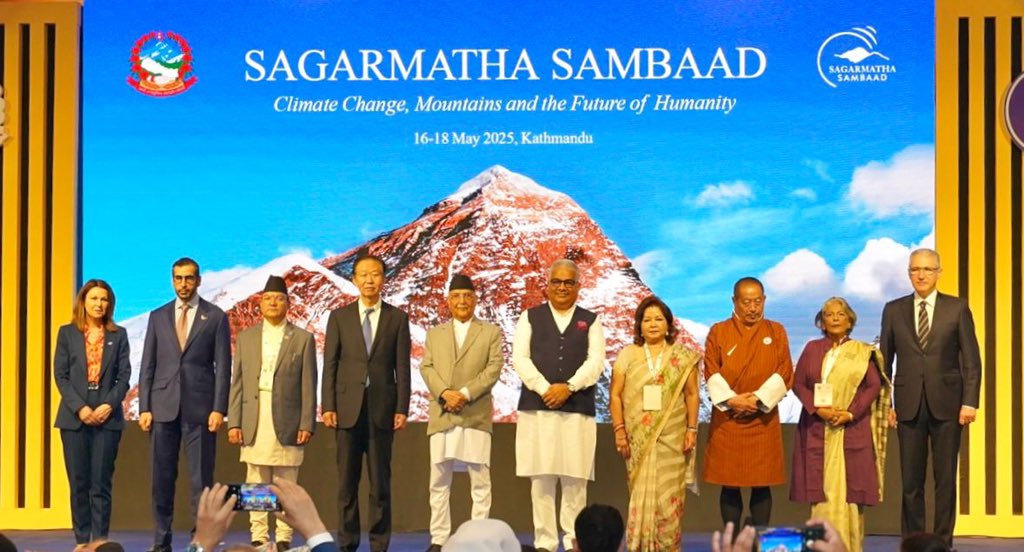India’s First Gene-Edited Sheep

- 30 May 2025
In News:
Sher-e-Kashmir University of Agricultural Sciences and Technology (SKUAST-Kashmir) has successfully developed India’s first gene-edited sheep, marking a significant breakthrough in the field of animal biotechnology.
Key Highlights:
- Institution Involved: Sher-e-Kashmir University of Agricultural Sciences and Technology (SKUAST), Srinagar.
- Technology Used:
- CRISPR-Cas9 gene editing — a precision genome editing tool that won the 2020 Nobel Prize in Chemistry.
- Gene editing was conducted without insertion of foreign DNA, thus the sheep is non-transgenic and differs from traditional GMOs.
- Gene Targeted: The myostatin gene, which regulates muscle growth, was edited to enhance muscle mass.
- Result: Muscle mass increased by 30%, a trait absent in Indian sheep breeds but seen in select European breeds like the Texel.
- Significance:
- Improved meat yield and quality in sheep.
- Potential for disease-resistant and higher-reproduction-rate livestock in the future.
- Supports India’s evolving biotech policy by promoting non-transgenic, gene-edited organisms that are more likely to receive regulatory acceptance.
- Aligns with goals of sustainability and food security by enhancing productivity per animal.
- Regulatory & Safety Aspects:
- Research adhered to international biosafety protocols.
- Sponsored by the Indian Council of Agricultural Research (ICAR).
- Legacy & Research Background:
- Developed after 4 years of dedicated research.
- Led by Prof. Riaz Ahmad Shah, also known for creating India’s first cloned Pashmina goat, Noori, in 2012, and contributing to the world’s first cloned buffalo at NDRI, Karnal.
Implications for the Future:
- Opens doors for precision breeding in livestock to boost India’s animal husbandry sector.
- Strengthens India’s position in advanced genomic research and supports the vision of Atmanirbhar Bharat in biotechnology.
- Awaits comprehensive regulatory framework for gene-edited animals, currently under government consideration.
Sagarmatha Sambaad 2025

- 27 May 2025
In News:
Union Environment Minister Shri Bhupender Yadav represented India at the 1st Sagarmatha Sambaad in Kathmandu, Nepal, a high-level biennial global dialogue convened under the theme “Climate Change, Mountains, and the Future of Humanity.”
The forum, held during the International Year of Glaciers’ Preservation 2025, focused on mountain ecosystems, climate resilience, and transboundary conservation.
India’s Key Proposals and Commitments
Reaffirmed India’s climate leadership and proposed a five-point call for global action to protect mountain ecosystems:
- Enhanced Scientific Cooperation: Promote joint research on cryospheric changes, biodiversity, and hydrological cycles.
- Building Climate Resilience: Develop early warning systems for Glacial Lake Outburst Floods (GLOFs) and invest in climate-resilient infrastructure in mountainous areas.
- Empowering Mountain Communities: Center policies on local welfare, integrate traditional ecological knowledge, and promote green livelihoods such as eco-tourism.
- Providing Green Finance: Ensure adequate and predictable climate finance for adaptation and mitigation in mountain nations, in line with the Paris Agreement.
- Recognizing Mountain Perspectives: Integrate mountain-specific issues into global climate negotiations and sustainable development agendas.
India’s Initiatives and Regional Cooperation
India highlighted the ecological value of the Himalayas and called for enhanced transboundary conservation among Himalayan nations under the International Big Cats Alliance. This alliance promotes joint protection of species like snow leopards, tigers, and leopards.
- Under Project Snow Leopard, India conducted its first comprehensive snow leopard assessment (2019–2023), recording 718 snow leopards, comprising 10–15% of the global population.
Significance of the Himalayan Ecosystem
- Hydrological Role: The Himalayas are the "Water Towers of Asia", feeding rivers like the Ganga, Brahmaputra, and Indus, and supplying around 1.2 trillion cubic meters of freshwater annually.
- Ecological Richness: A biodiversity hotspot, home to over 10,000 vascular plant species, 979 bird species, and 300 mammals such as the red panda and Himalayan tahr.
- Cultural Importance: Sacred in Hinduism and Buddhism, the Himalayas house pilgrimage sites like Kedarnath, Badrinath, and Mount Kailash.
- Economic Value: Support tourism, agriculture, forestry, and renewable energy. States like Uttarakhand, Assam, and West Bengal derive over 10% of state GDP from tourism.
The Lohit Basin project in Arunachal Pradesh (13,000 MW) exemplifies hydropower potential. - Climate Regulation: The range blocks cold Central Asian winds and influences monsoon patterns, ensuring rainfall for agriculture. Himalayan forests are major carbon sinks, mitigating global warming.
Key Challenges in the Himalayan Region
- Climate Disasters: Rising temperatures and glacier melt cause avalanches, landslides, and cloudbursts. E.g., 2025 Uttarakhand avalanche; 2023 Sikkim GLOF.
- Unsustainable Development: Slope cutting, deforestation, and seismic vulnerability threaten settlements (e.g., Joshimath subsidence linked to infrastructure projects).
- Glacier Retreat:
- Gangotri glacier has retreated over 850 meters in 25 years.
- Hindu Kush glaciers may lose 75% of volume by 2100.
- Biodiversity Loss: Invasive species and habitat loss displace native flora and fauna; 90% of endemic species in Sikkim Himalayas displaced.
- Unregulated Tourism: Littering and plastic waste—92.7% of Himalayan waste is plastic, 72% non-recyclable (2022 audit).
Recommendations for Sustainable Development
- Eco-sensitive Infrastructure: Mandatory Environmental Impact Assessments (EIAs), bioengineering, and electric mobility in high-altitude towns.
- Regulated Tourism: Introduce carrying capacity limits, permit-based entry, and promote low-impact tourism models.
- Glacier Monitoring & Water Management: Use remote sensing and GIS for glacier health; adopt ice stupas, rainwater harvesting, and efficient irrigation.
- Afforestation & Forest Conservation: Launch community-driven forestry projects (e.g., Van Andolan in Uttarakhand) to restore degraded ecosystems.
- Climate Adaptation Strategies: Expand early warning systems for GLOFs; promote climate-resilient crops and agricultural practices.
- Sustainable Livelihoods: Encourage organic farming, herbal industries, and eco-handicrafts to diversify mountain economies.
